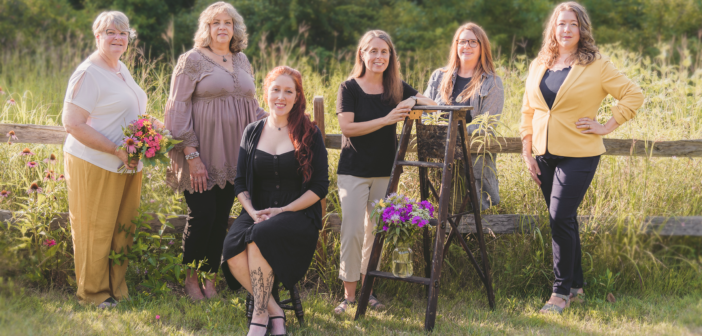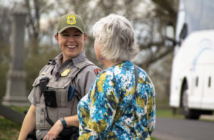Meet groundbreaking women, diggin’ their environmental careers, impacting land and lives across south central Pennsylvania and beyond
By Karen Hendricks | Photography by Melissa Ring
Women in science are scarce. Despite efforts to recruit and encourage girls and women to pursue science-related fields—a key component of STEM (science, technology, engineering and math), studies show women comprise between 25 and 30% of STEM fields today. That number is up from 1970, when women held just 8% of STEM positions.
“I believe science should be for everyone,” says Anne Gageby, environmental education manager at Fairfield’s Strawberry Hill. “It makes me sad that too often young girls envision white men in lab coats. If science is something they have an interest in, they can walk outside to view the birds, start thinking about the insects they encounter. Science is right in your backyard—that’s my philosophy.”
Science indeed begins in our backyard. We discovered seven local women forging career paths in environmental fields, and their work is having far-reaching impacts throughout—and beyond—the Adams County landscape.
In addition to Gageby, who teaches children and adults about nature at Strawberry Hill, meet groundbreaking women preserving farmland, training gardeners, converting lawns into meadows, creating small business garden centers and even traveling around the globe to study melting glaciers.
Making a Meadow: Meet Mary Ann Ryan

Too often, we don’t appreciate what’s in our own backyard—that’s how the saying goes. But for Mary Ann Ryan, one of her passion projects is actually her backyard.
“We’ve been working on this meadow for 15 years,” says Ryan, 57, gesturing across her Fairfield property. “The way the property was, this space was always open. This space just wanted to be a meadow.”
Where many homeowners might traditionally maintain a grassy lawn, she envisioned a meadow—basically a natural area with a diversity of herbaceous plants, she explains.
Ryan and her husband cultivated their meadow by planting native grasses, then adding native plants over the years—milkweed, spiderwort, goldenrod, asters, coneflower and Culver’s root, to name a few. She carefully chose them to achieve a goal—a cycle of blossoms from early summer through fall. But those blooms do more than provide natural beauty; they also provide essential food for wildlife.
“We’re feeding insects and birds with native plants,” explains Ryan. “We know through research that our insect population is declining. And if we lose our beneficial insects, we limit our [human]food supply, because bees and other insects are pollinators. It’s important to recognize and understand how we all work together in our environment.”
Over the past 21 years, Ryan has shared her knowledge of home gardening and landscaping as Adams County’s Penn State Extension Program’s consumer horticulture program coordinator. It’s a mouthful, but it basically means she’s taught hundreds of people, including Adams County’s current roster of 80 master gardeners. This summer, she taught Forest Gardening and Eco-Landscaping.
Ryan enjoys stretching the way people define gardens and yards. And her own backyard is an example, an alternative, to what we’ve long-considered an American ideal: a lawn of grass.
“If we could just get people thinking differently about how they look at their yards—it doesn’t have to be manicured. Don’t think about grass being your slate—your slate is your soil,” she advises.
Instead, Ryan encourages homeowners to think about adding trees, shrubs and plants into their yards first, then adding grass as pathways connecting those areas.
Ryan’s meadow is central to her
18-acre property, just below her deck. Cardinals, purple martins, finches and woodpeckers fly back and forth from the meadow to bird feeders perched around her deck. With the central meadow flourishing, Ryan decided to create a second meadow—still taking root—two years ago.
She imagines how homeowners could use her meadow projects as blueprints to reimagine their neighborhoods as homes for more than human residents.
“If we just made little changes, and one yard connected to another yard with a diversity of plants,” says Ryan, “then we’d start creating corridors for our insects, our bees and mammals, like little pieces of a puzzle fitting together.”
At Home at Strawberry Hill: Meet Anne Gageby
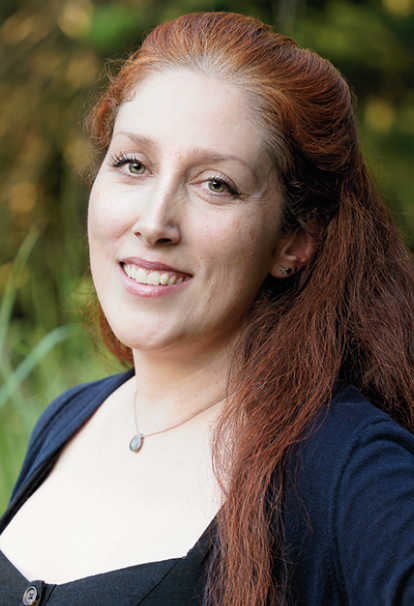
Anne Gageby became environmental education manager at Fairfield’s Strawberry Hill last year, but in some ways, the nature nonprofit has always been part of her life.
“I grew up in Fairfield, on property adjacent to Strawberry Hill, and my family has been involved since its founding in 1986,” says Gageby, 42. “I know every square foot of this space. My pappy started the maple sugaring program, my sister has been part-time office manager, I’ve helped clear trails, and my husband and I were actually married at Strawberry Hill—that’s how special this place is to me.”
It was a winding career path that led Gageby into the U.S. Army directly out of high school, where she had the opportunity to attend their Defense Language Institute and learn Spanish. That morphed into a teaching career, first as a Spanish teacher in Carroll County, Maryland, then a 14-year stretch as a school librarian.
“I integrated a lot of environmental information, the natural sciences, focused on STEAM [the STEM subjects of science, technology, engineering and math—plus the arts]—and folded that into my curriculum,” Gageby explains.
That experience and winding path brought her, full circle, back to Strawberry Hill, where she’s now leading programs in a much bigger “classroom”—the great outdoors. Programs range from animal tracking and habitats to aquatic communities and watershed health, since the property conserves and protects Swamp and Middle creeks.
Some of Gageby’s favorite programs include free full moon hikes and the development of programs for homeschool groups and Girl Scouts. But her proudest accomplishments? When kids return to Strawberry Hill after attending programs—with their entire families.
“That just makes my day, because I love hooking kids on nature,” Gageby says. “When you take something that could be considered a chore—like learning about science—and make it fun, then all of a sudden, they’re not thinking about learning because they’re also having fun, and it connects with them emotionally.”
And if anyone can testify to the power of nature, she can.
“I received a cancer diagnosis six days after I was hired at Strawberry Hill,” Gageby explains. “But I truly believe nature is healing—being here gave me time to process what I was going through. I don’t know how I would have gotten through it without Strawberry Hill, and I’m happy to say I’m cancer-free today.”
She’s looking forward to developing more adult programs focused on wild edibles and the history of Mount Hope and Swamp Creek Schoolhouse.
But it’s her own family history, intertwined with Strawberry Hill, that gives her a daily sense of purpose.
“My family has been involved with Strawberry Hill for years, and the environment has always been a passion of mine,” Gageby says. “So being able to come back home and work at a place that’s so dear to me—continuing my family’s legacy here—has been dream come true. It’s a cliché, but it’s true.”
For more information, visit strawberryhill.org.
Finding Her Niche: Meet Becky Shubert
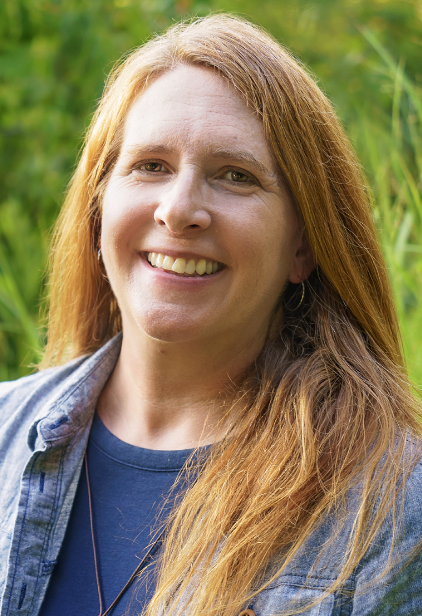
Becky Shubert describes herself as a plant collector. But her lifelong gardening hobby took a surprising turn a few years ago after taking a landscaping class led by the Franklin County Penn State Extension that changed her life.
“I was dumbfounded—because as much as I love birds, butterflies and wildlife around me—I realized most of my plants were not native,” recalls Shubert, 48, of Greencastle. “I realized I was short-changing and not servicing the environment like I should be.”
At the time, she was nurturing her young children at home as well as her garden. Her career as a high school math teacher was on hold, but she began educating herself about native plants.
“The biggest eye-opening thing to me,” Shubert says, “was that native species are adapted to meet the needs of native wildlife. There are specialized bees that must have pollen from native plants, and berries from native trees and shrubs are so much better for birds nutritionally. Non-native plants are like candy—they’re not as nutritional.”
Her go-to information sources became the Pennsylvania Department of Natural Resources, Penn State Extension Office, nonprofit Xerces Society and the all-native Mt. Cuba Center and Gardens in Delaware.
“Except I couldn’t find many places that carried native plants—I had to drive to Philly or Virginia or order them online,” Shubert explains. “And I thought, ‘If I’m looking for natives, other people probably are too.’”
As she integrated native plants into her home gardens, they thrived—so much so that she began dividing and potting them. A side hustle and small business began taking root. Shubert found her niche.
She began selling native plants at fairs and festivals in 2016 as The Native Niche. But several years later, she put down roots, establishing a seasonal location outside Greencastle’s Lumber Direct. Plants range from greenery like ferns to flowering varieties like columbines and coneflowers, plus intriguing little-known varieties such as Indian physic (American ipecac).
Like the plants themselves, her business grew to encompass native shrubs and trees.
“Oaks are always popular, and serviceberry is a big seller, because birds flock to it,” she notes. “Basically, if you have native plants, you have a natural bird feeder. You support pollinators with blooms, and then birds with berries and seeds.”
Insects are also included in the life cycle supported by native plants.
“The big push right now are host plants, where native insects lay their larvae. Most people know that monarchs need milkweeds, so that’s a well-known host plant, but goldenrod and asters are also good,” Shubert says. “Without those host plants, ecosystems aren’t functioning correctly.”
Her own life has become a balancing act, now that she’s returned to the classroom full-time. Weekdays, she teaches math to teenagers, but on Saturdays, Shubert educates the public about native plants.
“There’s still a learning curve, with some people viewing native plants as weeds,” she says. “But there are more and more returning customers—as well as new customers who track me down—coming with plant lists, because they have a goal of ecological restoration. That is just so exciting. And it’s fun to see customers interacting like a bunch of garden friends.”
When she’s not personally at The Native Niche, there’s an honor system and payment instructions.
“The plants are always here, and plant people are honest people,” Shubert says with a smile. “I don’t want prices to be a discouragement, so I try to make things as affordable as possible. To me, the educational side and seeing the difference it makes, makes it worth it.”
The Native Niche is beside Lumber Direct, 10 E. Walter Ave., Greencastle
or visit thenativeniche.com.
Mountaintop Moments: Meet Katie Hess
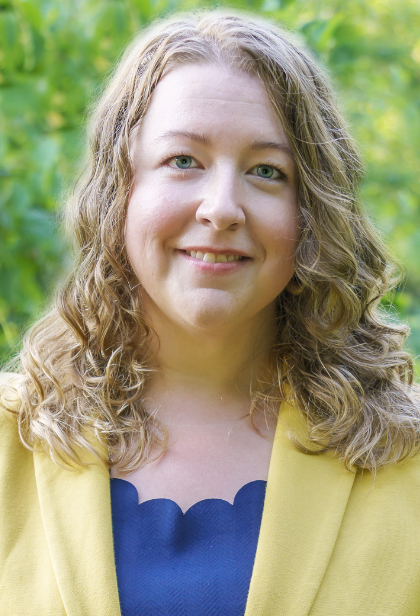
The nine years Katie Hess has spent as director of the South Mountain Partnership is the longest she’s ever stayed in one position.
“This job and this work really requires stability through time to make progress—it depends on human-to-human relationships,” explains Hess, 39. “In landscape conservation work, we really rely on that process, and we’re just starting to feel that momentum.”
She’s currently a resident of Carlisle, Cumberland County, but she grew up in two places—near Fort Loudon in Franklin County and in Adams County’s Biglerville. All of those hometowns gave her a foundation of knowledge for the South Mountain region—encompassing parts of Adams, Cumberland, Franklin and York counties—one of Pennsylvania’s eight conservation landscape districts. Her job is to foster relationships and partnerships that preserve and promote the South Mountain landscape, for both residents’ quality of life and the environment’s long-term health.
Four key characteristics make the South Mountain region unique: history; ecology (as the northern terminus of the Blue Ridge Mountains); agriculture, including Adams County’s unique fruit belt; and recreation—as Hess describes, “with the Appalachian Trail (AT) running down the spine of South Mountain.”
A state of the region plan, currently underway, is one of the projects she’s especially proud to be coordinating, she says. Working closely with each county planning department, the project creates
“a report card of environmental metrics like air quality, how many acres of farms we have, how much land is being preserved or converted—and we’re doing that so that in five years we can assess that metric data and tell the story of the trends,” explains Hess.
Since its inception in 2006, the South Mountain Partnership has awarded dozens of mini grants, funded by the state, to “local organizations doing amazing work on the ground,” says Hess, “such as watershed associations, the LEAF Project, the Cumberland Valley Rail Trail—we have a reputation for helping to get projects launched. We could be accomplishing so much more as a region if we invested in the front end, in people’s ideas—which is super important for the South Mountain region because we don’t have other funders for small environmentally-minded projects.”
She’s quick to point out that the word “partnership” is key to her work. More than 40 area residents serve on South Mountain Partnership’s committees,
for example.
“I believe being a facilitator is one of the most undervalued skills … making sure conversations lead somewhere,” Hess says. “I think that’s the niche we serve and maybe our greatest achievement—to keep people talking about how we’re going to get the best future possible.”
The South Mountain Partnership is funded by an annual grant from Pennsylvania’s Department of Conservation and Natural Resources to the Appalachian Trail Conservancy (ATC)—an organization that serves as Hess’ employer. And she’s excited about an ATC project on her horizon.
“My role expanded recently to serve the entire state and the conservation landscapes around the AT, because the next 100 years is not about the foot path,” she says. “It’s about the greenway around the trail and helping to mitigate climate change, species migration—at the forefront of society’s grappling with our most pressing national and global issues.”
That means she’s adding a new title to her name—director of Pennsylvania Landscape Conservation, in addition to director of the South Mountain Partnership. They’re perhaps the perfect roles for Hess, as this region was where her family roots were planted in the 1730s.
“I have the ability to work on the mini grant scale, the micro scale, the county scale—connecting with different groups of people—it’s just amazing,” Hess says.
“I dare to say it because it’s cliché, but I’ve got the best of everything.”
For more information, visit southmountainpartnership.org.
From Gettysburg to Glaciers: Meet Sarah Principato
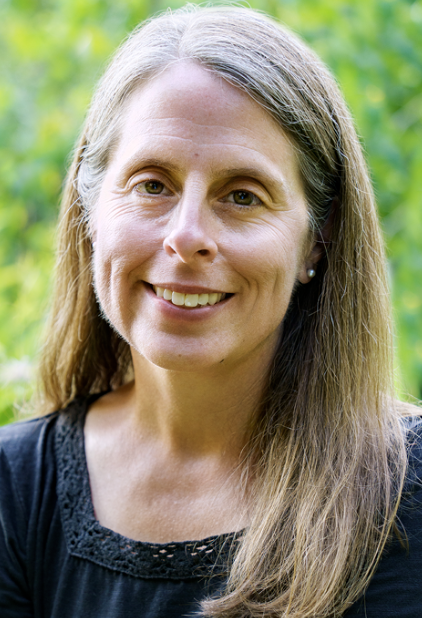
Sarah Principato has visited Iceland at least 15 times since 1997. That’s when she began researching glaciers, or large bodies of ice, in graduate school. Today, as a Gettysburg College professor of environmental studies of 20 years, she’s continuing her research by leading the next generation of scientists—her students—on her return trips.
“We’re studying the land forms—the ridges or moraines the glaciers have left behind,” explains Principato. “Early on in my research, I studied a small ice cap in the northwest part of Iceland where we were dating those ridges, or moraines. One thing we found is that the glaciers are rapidly melting today, much faster than before.”
During the school year, she teaches earth system science, climate change and disasters, the geology of national parks, and an upper-level class on glaciers and records of climate change. She has firsthand knowledge to share with her students, both in the classroom and out in the field.
“My students are heavily involved in the research,” Principato says. “We’re looking at the variety of landforms—not just moraines, but drumlins, which are hills that form under glaciers. When you look at drumlins, you get a sense of the flow of the ice, and we’re trying to understand ice streams—the fast part of the glacier, because they could potentially raise the sea level rapidly.”
Iceland, she explains, is important to the world’s climate system because it’s positioned in the middle of ocean circulation features—on a boundary between cold and warm water.
As Principato returns to some of the same sites, she’s seen changes in the landscape over the years.
“I’ve been to the edge of glaciers, and I’ve noticed how much further you have to hike now because of how much melting has occurred,” she observes. “It’s obvious when you visit again and again.”
Despite the icy and often somber subject matter, there’s also colorful Icelandic folklore.
“One of the fun things is that the name of one of the moraines is Skessugarður, which means ‘the wall between two trolls,’” says Principato. “What we see from that study so far is that that glacier rapidly collapsed at the end of the Ice Age. It could have implications as to how glaciers could collapse under climate change scenarios.”
She says climate change, in some way, is affecting everyone around the globe.
“I often think about how climate change will impact people. It’s easy to say, ‘I’m not in Iceland, so I don’t care about glacial melts,’” Principato says. “But one thing that is potentially going to be a problem here in Pennsylvania is that we’re seeing more intense rainfall events. The increase in flash flooding and the impact that will have on infrastructure, agriculture and orchards is one reason Adams County should be thinking about it and how to mitigate it.”
While climate change and glacial melt can be heavy subjects, she also encounters hope.
“It’s easy to get a little down about these things,” says Principato. “But I get so much positive energy from my amazing students. I just think they’re going to come up with solutions and change the world.”
Sarah Principato’s website is at sarahprincipato.sites.gettysburg.edu.
She Hearts Hostas: Meet Donna Seitz
You’ve probably seen the signs for The Hosta Hideaway along U.S. Route 15 near York Springs. But you might be surprised to learn about the driving forces behind its small business success—a mom, a school project and plants that cultivated loyal customers.
“We home schooled our son and wanted him to learn a business,” explains owner Donna Seitz. “My husband and I always liked hostas, so we started small and grew every year, and here we are 16 years later.”
Today, she offers about 400 varieties of hostas at the home-based garden business. The popular leafy plants range from miniature (six inches or smaller) up to giant (up to four feet tall, measuring six to eight feet wide).
At first glance, the front of her York Springs home looks like a garden center, but it’s when visitors follow the path winding around the back of her home that they typically gasp.
People are always surprised,” Seitz says with a laugh.
That’s because there are hostas as far as the eye can see, in a dramatic scene shaded by tall trees. The sweeping landscape includes nearly every shade of green. Small statues peek in between the almost heart-shaped leaves. It could be a scene right out of a fairy tale.
“We love hostas because they are like Old Faithful—they’re perennials that come back every year. And hostas are an extraordinarily easy plant to take care of,” explains Seitz, a former piano teacher. Her husband, a retired social work professor, considers gardening “therapy.”
Over the years, The Hosta Hideaway has hosted numerous gatherings for the Susquehanna Hosta Society, the local chapter of the national American
Hosta Society.
Donna’s gardening and hosta knowledge is completely self-taught. She even registered a brand new hosta variety that developed in her garden.
“We named it World Peace,” Seitz says. “It’s a giant upright with a blueish-green center with yellow margins, and the leaves are corrugated—with a little bubbling in the leaf—and it produces lavender-colored flowers.”
Leaves vary from chartreuse, dark yellow and gold to numerous shades of green and bluish-green. Introduced to the United States in the late 1800s, hosta originated in the mountains of Japan and South China, and it’s thought some varieties hailed from Russia, according to Seitz.
But these versatile, lush plants are clearly thriving in the rolling hills of northern Adams County at The Hosta Hideaway.
“We have customers up and down the East Coast—customers who have become friends,” Seitz says. “It’s really our customers who grew our business—through word-of-mouth, or people stopping by after seeing the sign along Route 15. There are so many people who like hostas, and they’ve been so supportive and kind.”
Although the Seitzes’ small business success outlived their son’s school days, he’s still part of the business: He creates one-of-a-kind handmade metalwork garden décor available at The
Hosta Hideaway.
Seitz’s advice to fellow small business owners is to find a niche, as she did.
“Think outside the box about what people want,” she advises. “But be prepared to work hard—this did not happen overnight. Be prepared for ups and downs, but working hard is the key.”
The Hosta Hideaway, 95 Sequoia Court, York Springs or visit thehostahideaway.com.
Leaving a Legacy, in Land: Meet Ellen Dayhoff

Groundbreaking and pioneering—those are two words that come to mind when describing Ellen Dayhoff’s career in farmland preservation.
For more than 30 years, she’s served as administrator of Adams County’s Agricultural Land Preservation Program. She remembers celebrating milestones along the way—the county’s first 1,000 acres of preserved farmland, then 10,000, followed by 20,000 acres. The program is currently in its 33rd year, with 194 farms—encompassing 24,650 acres—preserved.
“It was all on my watch, except for the first 10 farms,” says Dayhoff, 63.
“I’ve been doing farmland preservation since 1992. But if you would have said to me back then that I’d still be doing this, I’d say you were nuts.”
That’s because she launched her career by attending Central Penn Business School for computer programming. She worked in the field for a while, but when her son was born, she took a part-time job closer to home, working for Mount Joy Township. It was the first of several pivotal decisions that redirected her career.
“At the same time, my then-husband and I had applied for the county’s farmland preservation programs—we were one of the first 10 applicants and one of the first 10 preserved,” Dayhoff explains. “Our thought process was along the lines of—even if we don’t own this farm in the future, we don’t want to go past and see it become anything else. And I feel that, to this day.”
As the county’s farmland preservation program took off, the commissioners recognized Dayhoff’s passion and knowledge of the program and asked her to apply to become its administrator. The rest is history.
“Adams County is this little area that’s so diverse—it’s amazing to me,” Dayhoff says. “The heart of the county is truly the landowners, and most of the people who apply to the program are doing it because it’s not only a good business decision, but it’s what they believe in. It’s a commitment to the next generation.”
Dayhoff’s efforts played a role in preserving Adams County’s landscape over the past 30-some years. And those efforts not only affect the agricultural community.
“Adams County is very unique.
We have the Gettysburg National Military Park as its heart, then we have the unique fruit belt region in the northern part of the county and the equine region in the southeastern part. All three are equals in terms of their economic impact. And, people might visit for the military park, but what they’re seeing is so much more in Adams County [including agricultural landscapes],” says Dayhoff.
She cites two recent economic impact studies undertaken by the Adams County Office of Planning and Development—the office in which her position is rooted: Adams County’s fruit belt is credited with contributing $580 million to the county’s economy annually, while the equine industry’s annual impact is more than $49 million.
“Those two studies proved the importance of those two areas of ag. There’s always a balancing act between developing and agriculture—and making sure you plan for both,” Dayhoff says. “When you have certain types of soil that are so unique, such as our fruit belt region—it’s not only unique to Pennsylvania, but to the East Coast. The same with the south eastern part of the county—we have the number one standardbred horse breeding program in the nation. That’s huge because it’s not only some of best pastureland, but it would be some of the best developable land, so we want that to stay in agriculture.”
Dayhoff’s accomplishments in land preservation extend even further. She was instrumental in the creation of two additional organizations, as the founding president of the Pennsylvania Farmland Preservation Association and co-founder of the nonprofit Land Conservancy of Adams County.
The first organization came about as she and a handful of her 1990s-era counterparts around the state realized they were all trailblazing their ways in the new field of farmland preservation.
“It was myself, Lancaster, York and Westmoreland counties—we started talking about putting together an association of county [farmland preservation]administrators, so that we had one voice to go to the state with our ideas, as well as a way to bounce ideas off one another,” Dayhoff says.
The association meets twice a year, and Dayhoff says their networking has been invaluable over the years. Today, 52 of Pennsylvania’s 67 counties have farmland preservation programs.
“To this day, we are the only statewide association in the country—no other state has an association like ours, and we have input on the state level. I’m really proud of that,” Dayhoff says.
As she was working one-on-one with farmers to preserve Adams County’s farms for future generations, she had a realization.
“I learned very early on there was a second organization that Adams County needed for land that didn’t qualify for our program—open areas or wooded areas. Lancaster County had a land trust—as did others throughout the state—for people to donate their easements,” Dayhoff recalls. “The commissioners at the time gave me the OK to start digging into this, and we started going to the Land Trust Alliance to learn how to start the Land Conservancy of Adams County.”
She recalls the Land Conservancy’s first membership meeting at the Cashtown Inn, its founding members’ campaign—and those grassroots efforts in 1995 led to today’s achievements: more than 13,000 acres preserved, including meadows, forests, streams and historical spaces, as a result of working with more than 130 landowners.
“It’s taken off and bloomed,” Dayhoff says. “It was something near and dear to my heart—something I knew we needed in Adams County. They’re able to get federal grants, and I’m still involved in assisting. We work together as much as we can.”
She has looked forward for so long, pushing onward, that she’s not used to reflecting on how far she—and Adams County—have come.
“Sometimes I have to remind myself of everything—how hard we all worked to make it happen. And I think, ‘Did we really make that happen?’ It was just the right thing to do—it was best for the county,” says Dayhoff. “The thing that was most important to me,” and then she takes a moment, a catch in her throat, tears in her eyes, to say, “was making a difference.”
For more information on the Adams County Ag Land Preservation Program, visit http://tinyurl.com/adamscountyag. And to learn more about the Land Conservancy of Adams County,
visit preserveadams.org.

